 Facebook
Facebook
 X
X
 Instagram
Instagram
 TikTok
TikTok
 Youtube
Youtube
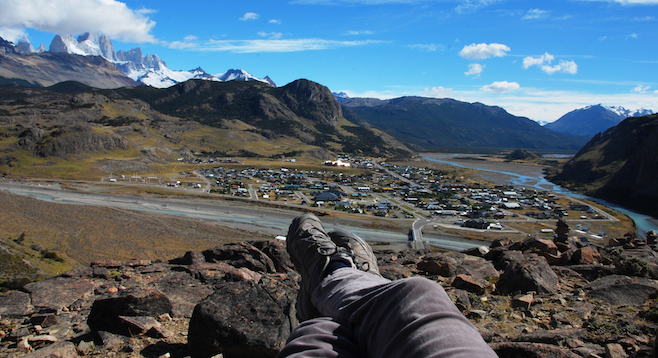
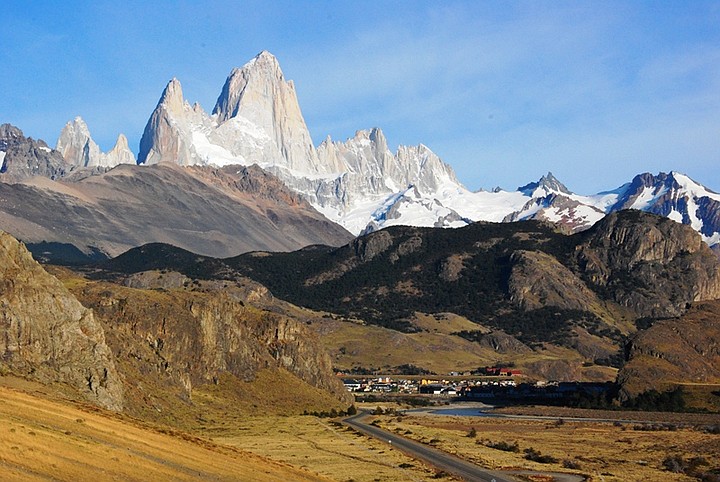
In South America, religious icons are as common as sunrise, and shrines are ubiquitous. But a shrine studded with cigarette packs, bottles of beer and decks of playing cards?
Welcome to El Chaltén, Argentina – named for a scrubby plant with edible berries – an international destination and a town of ones. One gas station. One ATM that works once in a while. One microbrewery, popular for its handcrafted negro and rubio beers, and Fitz Roy, considered one of the world’s most challenging peaks to ascend. Here I found air so fresh it should be bottled, a waterfall, and steady streams of visitors who slid along gravel streets — life as a microcosm, complete with guachos.
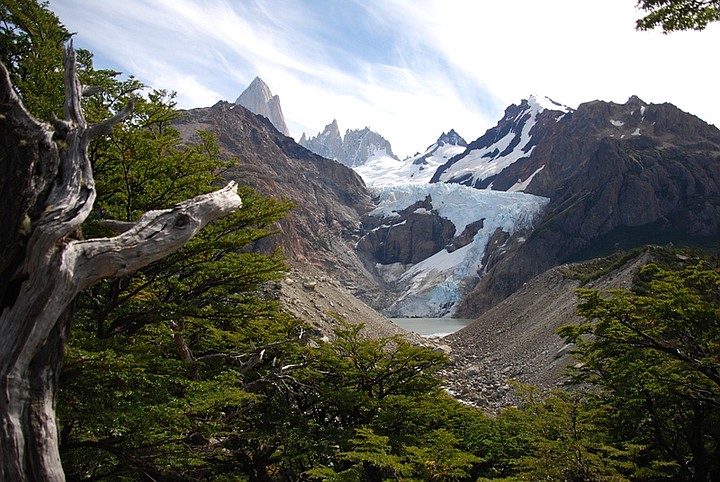
Population 800, elevation 1,351 feet, El Chaltén is gateway to Los Glaciares National Park, a UNESCO World Heritage site created in 1937 to protect 247 glaciers, lakes, forest plants and animals. Climbing, trekking, fishing, horseback riding, hiking or just chillin’ – life, nestled in this valley beneath Cerro Fitz Roy, is enchanting.
Visitors come for the views and climbs. Dusty arteries veining from El Chalten into the park lead to the extraordinary wildness of Patagonia. Mount Fitz Roy is 11,171 feet. Cerro Torre is 10,177 feet. Here you have opportunity to see glaciers that are advancing.
Ñirre, lenga and coihue forests turn brilliant hues in March, competing with the rich green-red flash of cachaña (parrots) squawking and the red-headed Patagonia woodpeckers banging against bark. A piche (armadillo) scrambled along the dusty trail. The area is home to guanaco, European hare, Argentine grey fox, red fox, puma, condor, Mora eagle, Andean huemu, rhea, Chilean flamingoes, black-necked swans, bats, Austral hog-nosed skunks – and that’s just the short list.
Lodging ranges from the elegant to the energy-efficient tent – providing a base camp to meet any budget. Dining spots are plentiful, at least during the months of October through May. High season is January through March. There are two ways to approach El Chalten: by bus or by car.
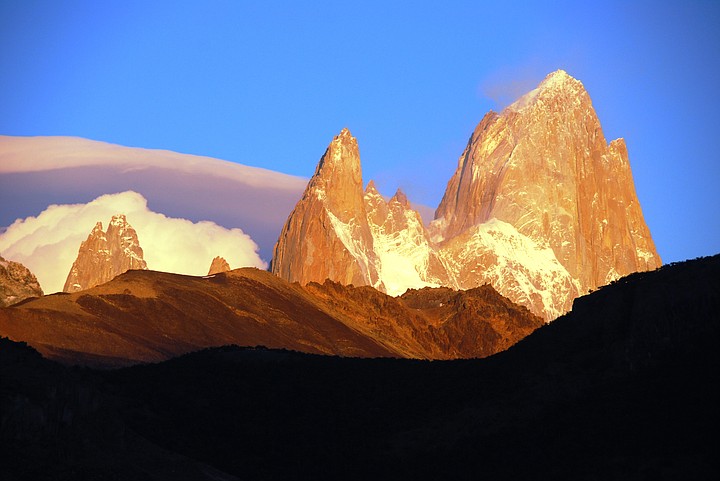
Buses leave from El Calafate, which has an international airport. Roundtrip fare for the four-hour ride is approximately $35. The steppe scenery is arid, stark, vaguely Arizonian with red buttes. Finally, as Mount Fitz Roy looms large through the windshield, expect to gasp with astonishment. You won’t be alone.
The town is open year-round; however roads may become impassable during inclement weather. My summertime visit in February included three perfect weeks. Darkened skies held crushed diamonds; luminous daylights delighted parrots.
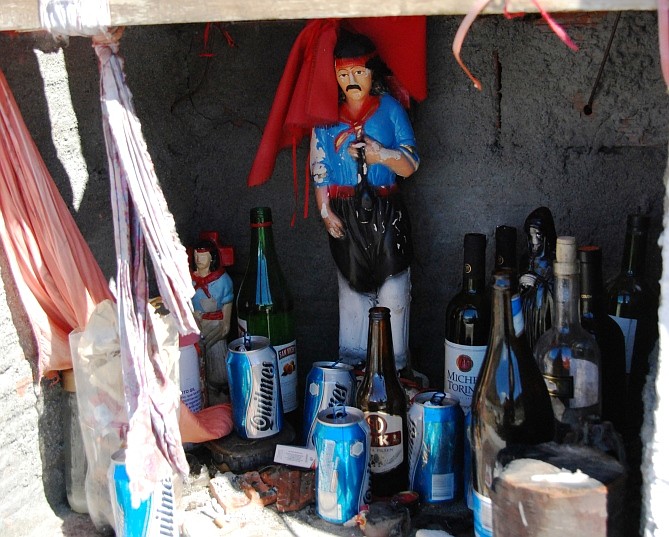
I crossed the bridge that spans Rio de Las Vueltas and walked the dirt path to the home of Danish settler Andreas Madsen (1926–1985). Orchards and machinery, chicken coops and tombstones – remnants of pioneer life remain on this spit of land. On the periphery, a pack of feral dogs congregate. I watch them obliquely; they watch me steadily, warily. Horses graze placidly, untethered.
If you go, here’s one word of advice: Hedge your bets. While hiking, neither panic nor run should you meet a puma. Instead, leave a beer at that little roadside shrine for Gaucho Gil, the legendary 19th-century miracle worker. He’s got your back.



In South America, religious icons are as common as sunrise, and shrines are ubiquitous. But a shrine studded with cigarette packs, bottles of beer and decks of playing cards?
Welcome to El Chaltén, Argentina – named for a scrubby plant with edible berries – an international destination and a town of ones. One gas station. One ATM that works once in a while. One microbrewery, popular for its handcrafted negro and rubio beers, and Fitz Roy, considered one of the world’s most challenging peaks to ascend. Here I found air so fresh it should be bottled, a waterfall, and steady streams of visitors who slid along gravel streets — life as a microcosm, complete with guachos.

Population 800, elevation 1,351 feet, El Chaltén is gateway to Los Glaciares National Park, a UNESCO World Heritage site created in 1937 to protect 247 glaciers, lakes, forest plants and animals. Climbing, trekking, fishing, horseback riding, hiking or just chillin’ – life, nestled in this valley beneath Cerro Fitz Roy, is enchanting.
Visitors come for the views and climbs. Dusty arteries veining from El Chalten into the park lead to the extraordinary wildness of Patagonia. Mount Fitz Roy is 11,171 feet. Cerro Torre is 10,177 feet. Here you have opportunity to see glaciers that are advancing.
Ñirre, lenga and coihue forests turn brilliant hues in March, competing with the rich green-red flash of cachaña (parrots) squawking and the red-headed Patagonia woodpeckers banging against bark. A piche (armadillo) scrambled along the dusty trail. The area is home to guanaco, European hare, Argentine grey fox, red fox, puma, condor, Mora eagle, Andean huemu, rhea, Chilean flamingoes, black-necked swans, bats, Austral hog-nosed skunks – and that’s just the short list.
Lodging ranges from the elegant to the energy-efficient tent – providing a base camp to meet any budget. Dining spots are plentiful, at least during the months of October through May. High season is January through March. There are two ways to approach El Chalten: by bus or by car.

Buses leave from El Calafate, which has an international airport. Roundtrip fare for the four-hour ride is approximately $35. The steppe scenery is arid, stark, vaguely Arizonian with red buttes. Finally, as Mount Fitz Roy looms large through the windshield, expect to gasp with astonishment. You won’t be alone.
The town is open year-round; however roads may become impassable during inclement weather. My summertime visit in February included three perfect weeks. Darkened skies held crushed diamonds; luminous daylights delighted parrots.

I crossed the bridge that spans Rio de Las Vueltas and walked the dirt path to the home of Danish settler Andreas Madsen (1926–1985). Orchards and machinery, chicken coops and tombstones – remnants of pioneer life remain on this spit of land. On the periphery, a pack of feral dogs congregate. I watch them obliquely; they watch me steadily, warily. Horses graze placidly, untethered.
If you go, here’s one word of advice: Hedge your bets. While hiking, neither panic nor run should you meet a puma. Instead, leave a beer at that little roadside shrine for Gaucho Gil, the legendary 19th-century miracle worker. He’s got your back.
Comments